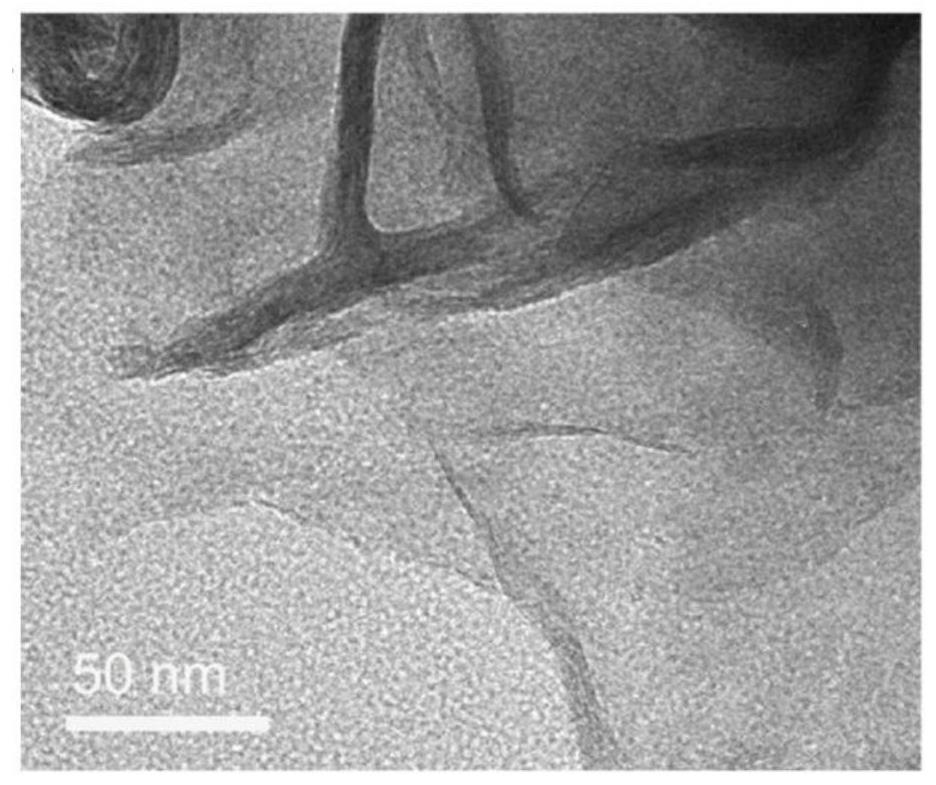Application of sulfur boundary defect molybdenum disulfide in electrochemical seawater uranium extraction
A boundary defect, molybdenum disulfide technology, applied in electrodes, electrolysis components, electrolysis process, etc., can solve problems such as poor stability
- Summary
- Abstract
- Description
- Claims
- Application Information
AI Technical Summary
Problems solved by technology
Method used
Image
Examples
Embodiment 1
[0050] An application of molybdenum disulfide with sulfur boundary defects in electrochemical seawater extraction of uranium, comprising the following steps:
[0051] Step 1. Add 5 mg of sulfur boundary defect molybdenum disulfide, 5 mg of activated carbon and 35 μL of Nafion solution (5 wt%) into 2 mL of ethanol, and ultrasonically obtain a uniform ink; uniformly coat the ink in a square shape of 1 × 2 cm as a carbon graphite felt above, after drying (70°C, 3h), it is used as the working electrode in the two-electrode system; and the counter electrode in the two-electrode system is a graphite rod;
[0052] Step II, filter the seawater through a 0.2 μm filter to remove particles and microorganisms, then add uranyl nitrate to the seawater to obtain simulated uranium seawater (the concentration of uranyl nitrate in the simulated uranium seawater is 8ppm), add 100mL of simulated uranium seawater In the electrolytic cell, place the double-electrode system in the simulated uranium ...
Embodiment 2
[0057] An application of molybdenum disulfide with sulfur boundary defects in electrochemical seawater extraction of uranium, comprising the following steps:
[0058] Step 1. Add 5 mg of sulfur boundary defect molybdenum disulfide, 5 mg of activated carbon and 35 μL of Nafion solution (5 wt%) into 2 mL of ethanol, and ultrasonically obtain a uniform ink; uniformly coat the ink in a square shape of 1 × 2 cm as a carbon graphite felt above, after drying (70°C, 3h), it is used as the working electrode in the two-electrode system; and the counter electrode in the two-electrode system is a graphite rod;
[0059] Step II, filter the seawater through a 0.2 μm filter to remove particles and microorganisms, then add uranyl nitrate to the seawater to obtain simulated uranium seawater (the concentration of uranyl nitrate in the simulated uranium seawater is 20ppm), add 100mL of simulated uranium seawater In the electrolytic cell, place the double-electrode system in the simulated uranium...
Embodiment 3
[0064] An application of molybdenum disulfide with sulfur boundary defects in electrochemical seawater extraction of uranium, comprising the following steps:
[0065] Step 1. Add 5 mg of sulfur boundary defect molybdenum disulfide, 5 mg of activated carbon and 35 μL of Nafion solution (5 wt%) into 2 mL of ethanol, and ultrasonically obtain a uniform ink; uniformly coat the ink in a square shape of 1 × 2 cm as a carbon graphite felt above, after drying (70°C, 3h), it is used as the working electrode in the two-electrode system; and the counter electrode in the two-electrode system is a graphite rod;
[0066] Step II, filter the seawater through a 0.2 μm filter to remove particles and microorganisms, then add uranyl nitrate to the seawater to obtain simulated uranium seawater (the concentration of uranyl nitrate in the simulated uranium seawater is 100ppm), add 100mL of simulated uranium seawater In the electrolytic cell, place the double-electrode system in the simulated uraniu...
PUM
| Property | Measurement | Unit |
|---|---|---|
| concentration | aaaaa | aaaaa |
Abstract
Description
Claims
Application Information
 Login to View More
Login to View More - R&D
- Intellectual Property
- Life Sciences
- Materials
- Tech Scout
- Unparalleled Data Quality
- Higher Quality Content
- 60% Fewer Hallucinations
Browse by: Latest US Patents, China's latest patents, Technical Efficacy Thesaurus, Application Domain, Technology Topic, Popular Technical Reports.
© 2025 PatSnap. All rights reserved.Legal|Privacy policy|Modern Slavery Act Transparency Statement|Sitemap|About US| Contact US: help@patsnap.com



